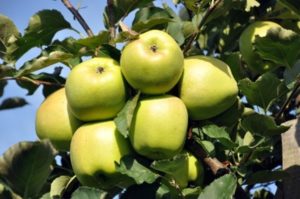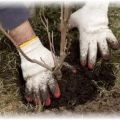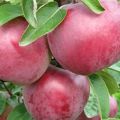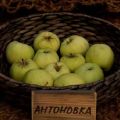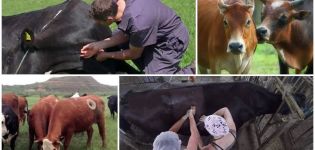Description of the apple variety Kortland and its characteristics, breeding history and yield
Cortland apple cultivation is popular among domestic gardeners. This variety attracts them with its taste and the ability of the fruit to be stored for a long time. The tree itself, due to its compactness, is well suited for growing in summer cottages. But, like any variety, Cortland has its own growing characteristics that must be taken into account if there are plans for a good harvest.
Breeding history of the variety
The variety was bred by American breeders in 1898. To obtain it, employees of the New York Experimental Breeding Station crossed two popular varieties at that time - Macintosh and Ben-Davis. Cortland gained worldwide fame after the First World War.

Description and features
To describe this variety, first of all, it is worth paying attention to two characteristics - the size of the tree and the characteristics of the fruit. This apple tree belongs to both medium-sized and medium-yielding. The fruits are medium in size, but have a pleasant taste and beautiful appearance.
What are the pros and cons of the variety?
The apple tree Kortland is able to boast of the advantages that make many domestic gardeners give preference to it:

- its fruits are stored for a long time;
- have a pronounced taste;
- attractive appearance;
- the plant is compact with a dense crown.
At the same time, one cannot fail to note a number of shortcomings that make some summer residents think about the establishment of this variety:
- medium resistance to scab damage;
- low resistance to powdery mildew;
- average yield.
Those who value yield indicators should pay attention to these features.
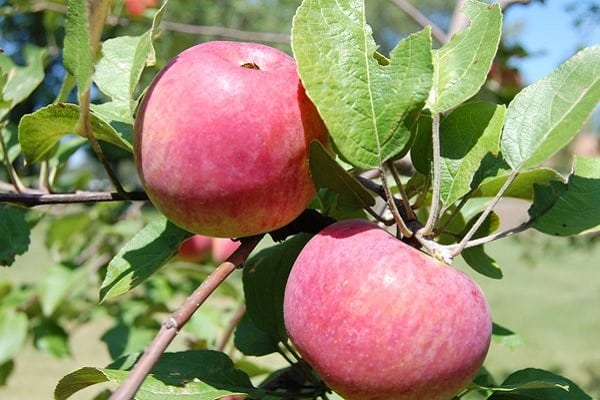
Main characteristics of the Cortland apple tree
The Cortland apple tree has a number of characteristics that distinguish it from other famous varieties. They concern both the tree itself and the fruit.
Tree size
Apple trees of the Kortland variety have an average height that does not exceed six meters. Their crown is wide, with a somewhat pronounced pyramid.

The trees are strong. The gray-burgundy bark on the trunk has no roughness, smooth. A distinctive feature of the shoots is a significant number of small lentils. In addition, they have a burgundy color and a lowered shape. Rarely take a form other than direct.
The edges of the leaves are coarse. And their plates are flat. In general, the foliage is dense. At the same time, the underside of the leaf is matte, gray-green, and the upper side is shiny and bright. Fruit development takes place on their ringlets.
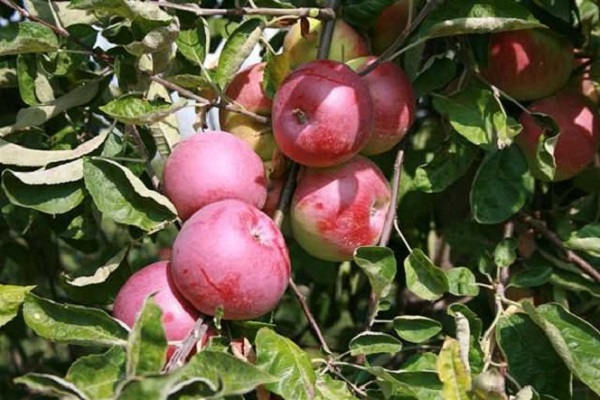
Fruit assessment
Apples of this variety do not differ in size and significant weight - up to 130 grams. The shape of the fruit is somewhat elongated, streamlined. The skin is soft and thin.
The color of unripe fruits is greenish-yellow with barely noticeable red stripes. The haze is clearly visible. Ripening, they become redder. Another distinctive feature of apples is a bluish bloom.
But these are not the only features of the Cortland fruit. Also noted:
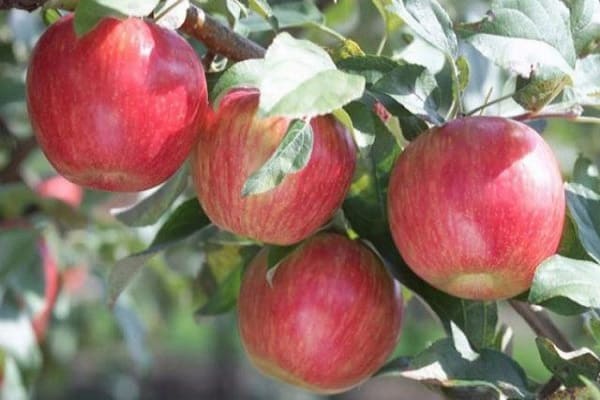
- significant size of the cone-shaped notch of the stalk;
- small size of the cup, which is either slightly open or completely closed;
- the upper pit of the fruit is small;
- free and wide seed chambers;
- flesh with a whitish tint and redness around the edges;
- rich aroma.
The stem of this variety is small and green in color, which turns yellow when the apples are ripe.
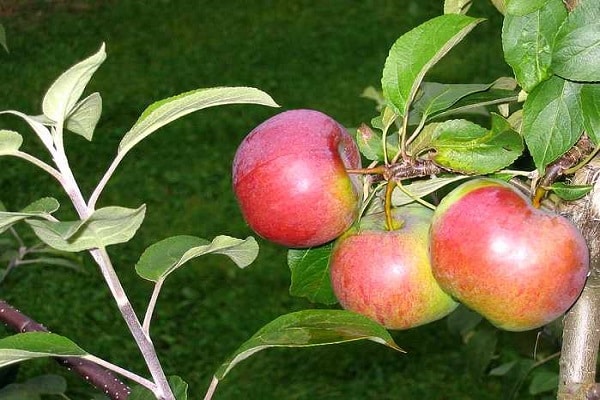
Winter hardiness
Cortland is a winter-hardy variety. Bred in North America and able to withstand extreme cold temperatures. Thanks to this, it is suitable for growing in most regions of Russia, even with the most severe climate.
Disease resistance
Exceptional resistance to diseases and pests is why, not least, Cortland apple trees are so popular. But this does not mean that they are not amazed by them in principle. Unfortunately, there are two diseases from which these plants can still suffer, under certain unfavorable conditions:
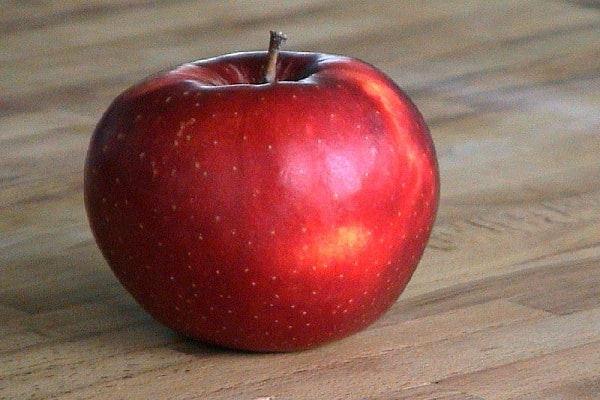
- powdery mildew;
- scab.
The main symptom of powdery mildew is a gray-white coating on the leaves. Over time, the foliage that is affected by the disease turns brown and falls off. Plaque also appears on the shoots. Later they lose their shape and die off.
Disease and inflorescences, as well as fruits, do not bypass. Symptoms are the same as with shoot damage. A rusty mesh forms on the fruit.
The main condition for development (powdery mildew, scab) is called cool summer nights in combination with high humidity. The fallout of morning dew drops plays a role.

Fruiting frequency
The variety is one of those that begin to bear fruit quickly. If it is grafted onto a dwarf stock, then the first crop is obtained in the third year.
The tree blooms from about mid-May. In the Middle Strip, during a cool spring, the beginning of the process is delayed until early June. By the time of fruit ripening, it is classified as pre-winter - fruits are harvested in mid-October.
Fruiting is equally regular, both in grafted apple trees and in those grown from a seedling. The latter, by the way, begin to harvest in the sixth year. The overall yield is average.

Yield
This apple variety has an average yield, which, under favorable conditions, turns into a large one. At the same time, it bears fruit regularly. Bad harvest years are rare for him.
Distribution regions
This variety is widespread in almost all regions of Russia, except for the Far North. It is often found in the Volgograd and Saratov regions, where the conditions for growing apples are suitable.
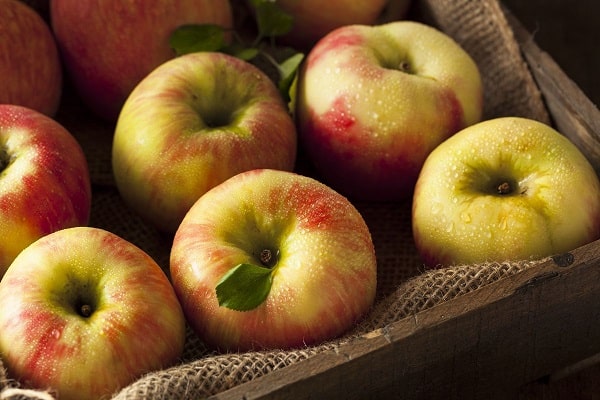
Conclusion
The Cortland apple tree is loved for many things - for its pleasant taste and beautiful appearance, for its durability and ability to survive various climatic features. Does not require constant care when growing.
The main thing is to prevent infestation by scab and powdery mildew. To do this, you should avoid damp places and use prophylactic drugs in wet, cool years.


